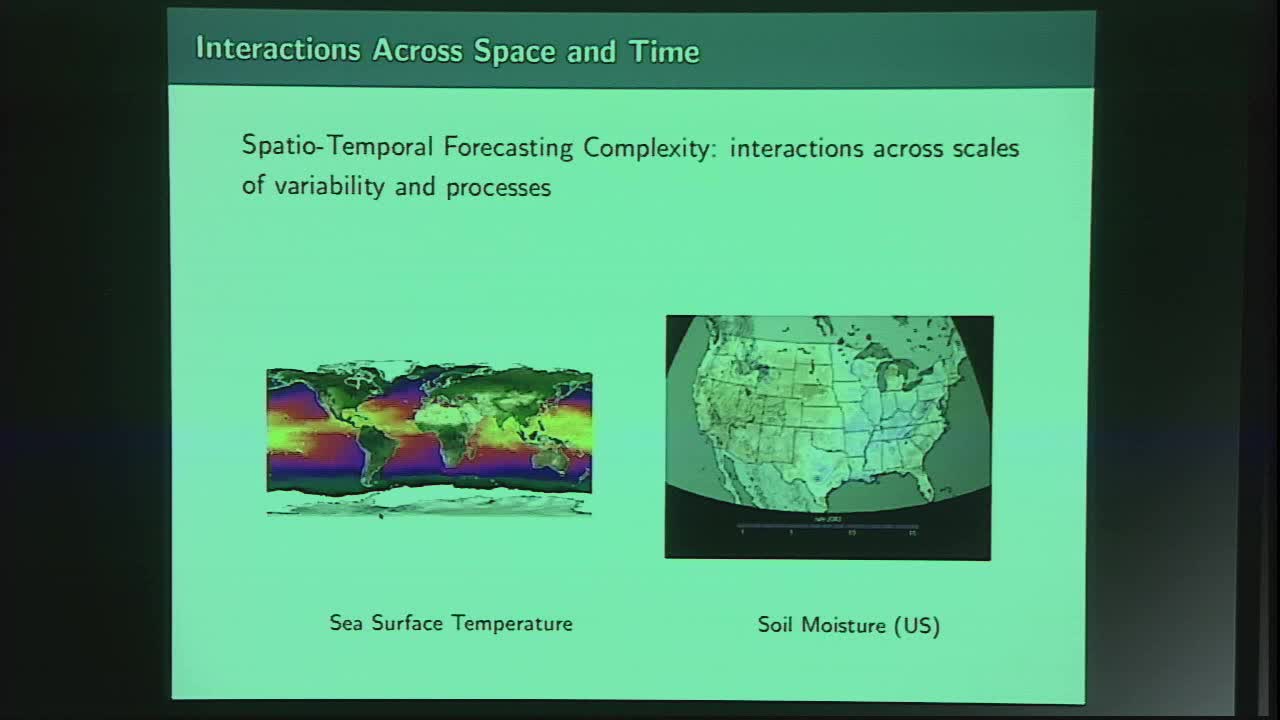Complexity vs Parsimony: The Challenge of Building Effective Nonlinear Dynamical Spatio-Temporal Forecasting Model
Presenter
April 23, 2018
Keywords:
- analog, Bayesian, deep model, echo state network, embeddings, hierarchical, quadratic nonlinearity
Abstract
Spatio-temporal data are ubiquitous in engineering and the sciences, and their study is important for understanding and predicting a wide variety of processes. One of the chief difficulties in modeling spatial processes that change with time is the complexity of the dependence structures that must describe how such a process varies, and the presence of high-dimensional complex datasets and large prediction domains. It is particularly challenging to specify parameterizations for nonlinear dynamical spatio-temporal models that are simultaneously useful scientifically (e.g., long-lead forecasting) and efficient computationally. Statisticians have developed some ³deep² mechanistically-motivated models that can accommodate process complexity as well as the uncertainties in the predictions and inference. However, these models can be expensive and are typically application specific. On the other hand, the science, engineering, and machine learning communities have developed alternative approaches for nonlinear spatio-temporal modeling, in some cases with fairly parsimonious parameterizations. These approaches can be quite flexible and sometimes can be implemented quite efficiently, but typically without formal uncertainty quantification. Here, we discuss the pros and cons of these approaches and provide hybrid alternative models at the interface of deep statistical and machine learning.
